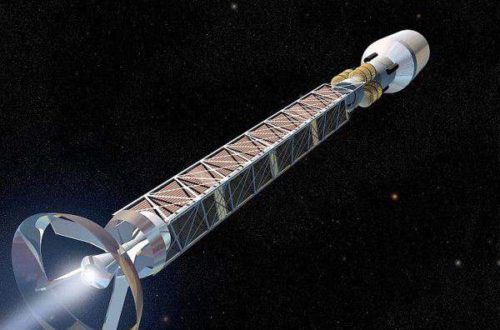What Does Felix Baumgartner’s Jump Mean for the Science World?

On October 14th, 2012, over seven million people would watch live as Felix Baumgartner jumped out of a capsule tied to a balloon hovering 128,100 feet in the air. Another fifty million would watch his descent on YouTube in the next 24 hours. During his fantastic freefall, Felix would become the first person to break the sound barrier unaided and survive, reaching an estimated speed of Mach 1.24 (824 miles per hour). A huge team of scientists and engineers, many of them from NASA, supported him in his stunt. But what does it mean for science?
While the stunt was substantially financially backed by Red Bull, much of Felix’s team would never have been tied to the project without some possibility of deriving some new scientific data from the jump. “The fact that it was a flight test program was why we were able to assemble this leading team of experts to develop the mission; it was about science and learning and the process of saving people’s lives. We will analyze this data for months, if not years, to come,” remarked Art Thompson, the technical project director for the event.
Saving Lives
Safety was one of the major draws for the NASA personnel working with the Baumgartner team. The suit and many of the safety devices employed for the jump had never been tested before in these conditions. Development of the suit worn by Felix Baumgartner took about five years, and the similarity of the stunt to high-altitude bailouts has not gone unnoticed.
As mankind looks to developments in space, the research and development that went into making sure Felix did not lose consciousness as he fell is directly applicable to future pilots and astronauts who might have to bail out of an extremely high-altitude aircraft, and is even the starting point to looking into bailouts from space itself. The parachute built into the suit was especially impressive: it was outfitted with special sensors that could determine if Felix fell for more than six seconds while experiencing 3.5Gs, at which time it would automatically deploy.
A secondary parachute would also open if Felix Baumgartner fell at more than 115 feet per second less than 2000 feet from the ground, an indication that he was unable to manually deploy his primary chute. These features can easily save the life of someone who lost consciousness after bailing out of their craft.
Under Pressure
The air pressure experienced by Felix at almost 24 miles in the air was a major concern in the planning of the mission, and his suit was essentially a modified pressure suit like those used in the space shuttle missions. One risk was that he would suffer an embolism: a condition where small gas bubbles form in the blood and organs, and potentially fatal. A smart controller in the suit automatically monitored and adjusted the pressure in his suit during both his ascent and free fall, helping him to avoid pressure-related complications.
Since his helmet could of course never be removed during the ascent and fall, it was just as smart as the suit. It automatically supplied Felix Baumgartner with water and oxygen during the mission, and the visor was equipped with a heating circuit to prevent ice forming at the very low temperatures experienced at that elevation.
While the fall was certainly a spectacular, and Felix’s primary motivation might have been to break a few world records, the event was as much as triumph for aerospace science as it was an amazing feat of strength. The knowledge and data gained from Red Bull Stratos will color new innovations in high-altitude and space travel for years and even decades to come.
Would you like to receive similar articles by email?






One Comment
Carol
I think if Felix Baumgartner had not had done the jump, it would still be the question of this generation knowing if it was humanly possible with technical assistance.
Science will at least see that humans being able to perform at this altitude may lead to other events or advancements. Until we try, we don’t really know!